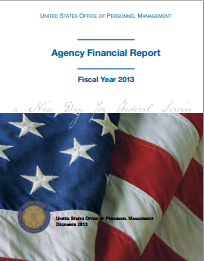- Home
- Agencies
- Department of Agriculture
- Department of Housing and Urban Development
- General Services Administration
- Department of Commerce
- Department of the Interior
- National Aeronautics and Space Administration
- Department of Defense
- Department of Justice
- National Science Foundation
- Department of Education
- Department of Labor
- Office of Personnel Management
- Department of Energy
- Department of State
- Small Business Administration
- Environmental Protection Agency
- Department of Transportation
- Social Security Administration
- Department of Health and Human Services
- Department of the Treasury
- U.S. Agency for International Development
- Department of Homeland Security
- Department of Veterans Affairs
- Goals
- Initiatives
- Programs
Primary tabs
Strategic Objective
MG01.03 Provide targeted learning and developmental opportunities for OPM’s employees
Strategic Objective
Overview
- Developing an agency workforce plan that outlines OPM’s workforce needs for the medium to long term.
- Conducting a skills gap analysis that identifies the skill requirements of the OPM workforce.
- Aligning Learning Center and The Lab @ OPM’s offerings with OPM needs identified through the skill gap analysis.
- Training OPM employees on the agency’s core values as well as problem-solving methods that support those values.
- Instituting a formal experiential development program (e.g., Fellows, details, cross-organization project opportunities).
- Supporting shadowing and mentoring practices and programs.
- Defining career paths for OPM occupations.
- Leveraging Employee Resource and Affinity Groups to help connect to employees at all levels of the organization.
Progress Update
In FY 2015, OPM integrated a career mapping tool into the Learning Management System, which allows employees to understand the competencies and requirements for entry or advancement within various occupations and supports their career planning; supported employees by creating an OPM Mentoring program, providing mentoring orientation sessions and ultimately pairing 27 mentor and mentees; developed and delivered instructor-led courses in OPM's cross-cutting core competencies (problem solving, customer service, data analytics, and oral and written communications) to help ensure all employees are proficient in these core areas; developed a Lean Six Sigma process improvement certification framework that supports the dissemination of Lean Six Sigma techniques across functional operations; and launched the pilot of OPM Connect, a workforce agility project that allows employees to contribute to projects that may be outside of their normal duties, but which support Agency mission and embrace innovation.
Over the past few years, OPM has shifted its approach to learning and development from entirely decentralized to a more corporate approach. The agency continues to reevaluate and rebalance this function and the associated funding to ensure the workforce has the skills needed to accomplish the agency’s mission. Certain functions, such as internal training and development policy and management of the learning management system, are consistently centralized. With limited funds for training delivery, however, there is tension between the need for specific, technical skills in each organization, and the need for broader competencies, like customer service, that support agency-wide success. OPM’s senior leadership team will continue to work together to identify corporate learning priorities and determine the appropriate balance between corporate and decentralized learning priorities.









